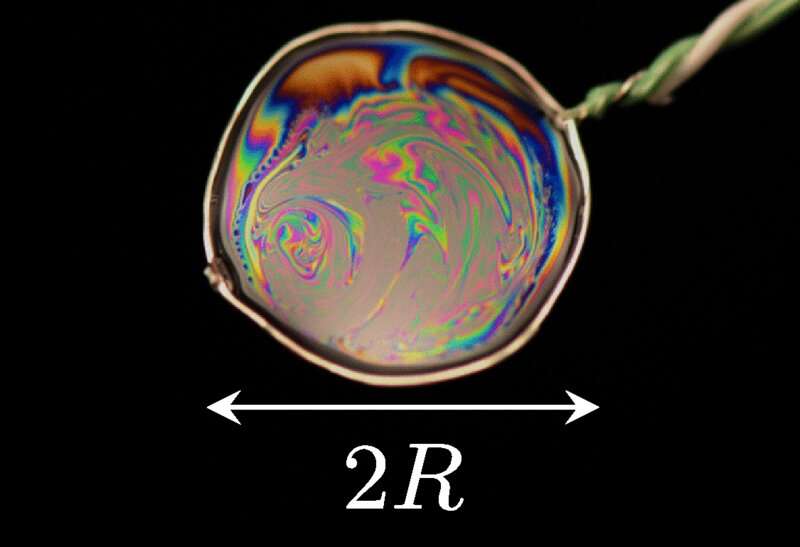Photograph of a soap film hanging on a frame constituted of a thermocouple probe. The radius of the soap film in this picture is R = 6 mm . Credit: Physical Review Letters (2022). DOI: 10.1103/PhysRevLett.129.268001
A team of researchers at Université Paris-Saclay, CNRS, has discovered that the film that makes up ordinary soap bubbles is cooler than the surrounding air. In their paper published in the journal Physical Review Letters, the group describes experiments they conducted with soap bubbles.
Bubbles exist in a wide variety of environments, from beer glasses to clothes and dish washers to crests on waves. They even exist in tiny environments, like in the space between human teeth. A lot of research has been done with bubbles, much of it focused on controlling them during industrial processes. But there is still more to be learned, apparently, as the researchers in Orsay recently discovered something new about them—their films are cooler than the air surrounding them.
As with many discoveries in science, the researchers did not set out to make such a discovery; they were studying stability of bubbles, and while doing so, happened to use equipment that allowed them to measure the temperature of the bubble film, finding that it was cooler than the ambient air for all the bubbles they tested.
In their work, the researchers created bubbles using ordinary dish soap, water and glycerol. After discovering a temperature difference, the team refocused their efforts to learn more. They tried changing the temperature of the air, the humidity level and also the proportions of the ingredients used to make the bubbles. They found that they were able to make bubbles that were up to 8 degrees Celsius cooler than the air around them. They also found that changing the amount of glycerol impacted the temperature of the resulting bubbles—more of it yielded higher temperatures.
The researchers suggest the cooler films could be the result of evaporation as the bubbles form. They noted also that as the bubbles persisted, their films slowly grew warmer, eventually matching the ambient air temperature. They suggest the large temperature differences they found with some bubbles might have an impact on bubble stability, and conclude that more work is required to find out why the films are cooler and if it might be a useful attribute.
More information: François Boulogne et al, Measurement of the Temperature Decrease in Evaporating Soap Films, Physical Review Letters (2022). DOI: 10.1103/PhysRevLett.129.268001. On Arxiv: arxiv.org/abs/2212.07104
Journal information: Physical Review Letters
© 2022 Science X Network
























